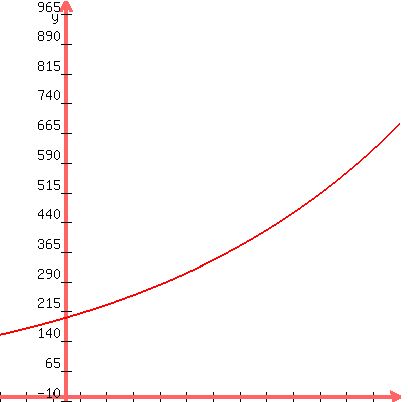Question 821303: my problem is: "The amount accumulated in a bank account over a time period 't' and based on an initial deposit of $200 is found using the formulas A(t)=200(1.025) and it has a squared 't' at the end of the closing parenthesis., t is less than or equal to 0. Time, t, is represented on the horizontal axis. the accumulated amount, A(t), is represented on the vertical axis."
what i want to know is:
a.How do you find the x-intercept?
b.How do you find the doain?
c.How to find the range?
d.And how to find out if the function has a max or min. value?
Answer by stanbon(75887)   (Show Source): (Show Source):
You can put this solution on YOUR website! "The amount accumulated in a bank account over a time period 't' and based on an initial deposit of $200 is found using the formulas A(t)=200(1.025) and it has a squared 't' at the end of the closing parenthesis., t is less than or equal to 0. Time, t, is represented on the horizontal axis. the accumulated amount, A(t), is represented on the vertical axis."
A(t)=200(1.025)^t
--------------------------
what i want to know is:
a.How do you find the x-intercept?
Let A(t) be zero; then solve for "t":
200(1.025)^t = 0
(1.025)^t = 0
Note: there is no value of "t" that will make 1.025^t equal zero.
--------------------------------------
b.How do you find the domain?
Since A(t) is the amount in the bank and "t" is time.
the domain is 0<= t <= oo
--------------------------------
c.How to find the range?
Since 1.025 is greater than 1 and t >= 0, A(t) >= 200
------------------------------------
d.And how to find out if the function has a max or min. value?
Since 1.025 is greater than 1 there is no max.
Since A(t) is asymptotic to zero there is no minimum.
However, since t >= 0, A(t) is >=200.
===========================================

===========================================
Cheers,
Stan H.
=============
|
|
|